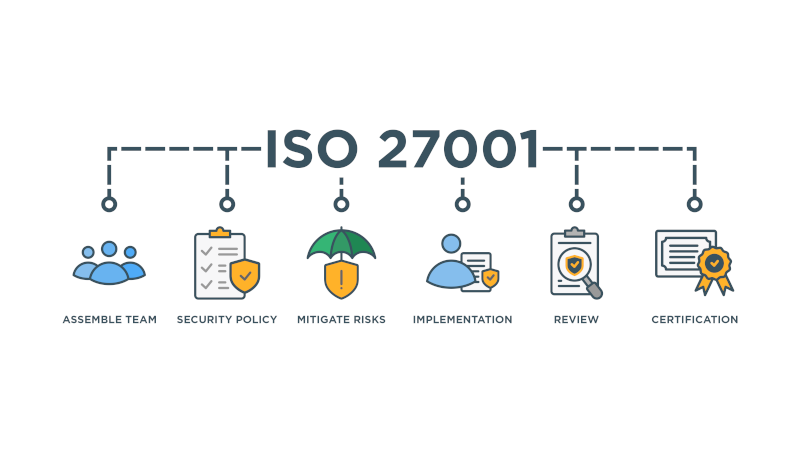
Great User Onboarding copy helps people make decisions and learn quickly. How you write is as important as what you’re writing about. You can bake in good copywriting principles with a Style Guide to improve your user onboarding experience. We give you tips on how to express your brand voice, but also a practical advice to use now.
In this article:
- Why you need a User Onboarding Style Guide
- Improve Cognitive Fluency with Clear Copywriting
- Bland content makes decision making difficult. Be bold.
- Writing rules go out the window. Bye!!
- Adopt an established Style Guide as a starting point
- Principles for good User Onboarding Copy
- User Onboarding Copy Guidelines
Why you need a User Onboarding Style Guide
As we learn more about how the human brain makes decisions, researchers have discovered that most of the decision making happens subconsciously. Unclear writing and even a lack of emotional cues make the decision-making experience muddled and difficult.
Effective copywriting is conversational and engaging. It engages users’ curiosity while communicating with your unique brand voice. How is the translated to writing user onboarding experiences? With a user onboarding style guide, you can bake your principles right into everything you do.
First, let’s start with What is User Onboarding? We define user onboarding as the process whereby users are introduced to a service over time, to ensure users reach the goals or benefits promised by the service.
With User Onboarding Copy, we’re talking about the text and language you use in onboarding experiences, including any copy a user sees as they get familiar with your product, or even a new feature release:
- Registration forms
- Welcome emails
- Interactive walkthroughs for first-time users
- Drip campaign emails
- Tooltips and in-app layovers like coach marks
- Modal windows and welcome screens
- In-app knowledge base articles
- In-app feature announcements and interactive tutorials
Marketing teams and product teams have been spent years A/B testing even the merest morsel of microcopy and UI text. Users encounter language in the buttons, form fields, headlines, loading screens and social media. In her article on Copywriting for User Experience Talisa Chang points out that different people and teams are responsible for managing all this text and writing in various contexts.
In user onboarding, you already know your audience. You can use segments to zero-in on specific user groups. You also know where they are in your application and what they’re trying to do.
Watch this video, where we talk about:
- How you can double the number of people willing to buy your product
- How to ensure consistency with a style guide.
- Writing rules you should follow, and others you should toss out.
- Save time by building on industry standards.
Improve Cognitive Fluency with Clear Copywriting
In a study on cognitive fluency called Preference Fluency in Choice, researchers changed the text describing a product from an easy-to-read to hard-to-read font. The easy to read fonts doubled the number of people willing to purchase the product.
Anything that makes a thinking harder is a barrier to decision making.
“Not surprisingly, it turns out that people prefer things that are easy to think about rather than things that are difficult to think about. This feeling of ease or difficulty is known as cognitive fluency.” - How Cognitive Fluency Affects Decision Making, UX Matters.
Make everything as simple as possible. Write clearly and legibly.
Tip: Readability is affected by a number of factors such as word length, the number of syllables, sentence length and complexity. Readability Analysis tools like this one review your text and give you a rating on a scale, such as the expected age reading level.
Bland content makes decision-making difficult. Be bold.
Don’t be boring and flat!
Research shows that 90% of purchase decisions are made subconsciously, and most of those decisions are surprisingly emotional. Advertisers, like Kevin Roberts, CEO of Saatchi and Saatchi, claim that the buying decision is 80% emotional and 20% rational.
It turns out, we need emotional cues to help us make decisions.
In a talk on “Using Neuroscience to Optimize the Customer Acquisition Process,” Tom Shapiro said being unemotional could be a significant barrier to decision-making. He argues that if your marketing doesn’t evoke an emotional response out of your audience, you’re making it physically and mentally difficult for your audience to make a purchase.
While tools like Grammarly give you instant feedback on the quality of your writing, tools like from Adoreboard’s Toneapi will analyse your content to tell you the emotional tone of the content, and they promise that it will “ensure content packs an emotional punch.”
When you’re writing, think about how you can empathise with your audience. Do you think it sounds far fetched to say that your SaaS application can improve someone’s emotional state? Decision makers are under enormous pressure to save time and money and prove to their own colleagues and clients that they made a sound decision. Support them to improve their decision-making confidence.
Consider these questions: How will this solution improve their lives? What negative emotions or experiences will be relieved or improved by making this decision? Make sure to address that in your copy and also in your language.
Compare these examples. Which is conveys more emotion? Is the emotion suitable to the message?
- We’ll reduce the time it takes to get to market by 50%.
- We’ll slash the time it takes to get to market by half.
Compare these examples. How does the second example convey the desired outcome for the decision maker?
- In three steps, we’ll show you how to use our calendar application to waste less time.
- Here’s how to clear your calendar to find space to think and plan.
Tip: Check out this guide which promises 380 high emotion words to persuade your audience. Use it for inspiration, but be careful not to manipulate users. This is not the time for exaggeration. Don’t make promises you can’t immediately fulfil. In the onboarding process, you’re not building brand awareness, you’re giving valuable experiences directly in your application.
Writing rules go out the window. Bye!!
In school, you were taught not to start a sentence with “And” or “But.” You were also told not to write down contractions, “we’ll” or “can’t”. You were most certainly taught that a proper sentence has at least a subject and a verb. Is that always the case?
Any writing tool with a grammar check will highlight sentence fragments, and nudge you to fix it. But that might not be what your users need.
“Sentence fragments are acceptable to use when your intentions are clear. That’s because good marketing draws the reader in, quickly relays information using a casual tone and provides emotional resonance–all of which are possible with sentence fragments.” - Sentence Fragments in Copywriting
Sometimes rules are completely misunderstood. If you end a sentence with a preposition, such as “about” Grammarly advises that some readers may object. However, their advice goes further to point out this rule is a myth. The only reason you should rephrase it is to avoid strongly worded letters about your grammar. You have to balance readability with what is appropriate for your audience.
We discussed this on Inbound.org recently, and some people were happy to chuck out a whole bunch of writing rules. On that thread, copywriter Katie Holmes said a copywriter’s main object is to keep users engaged, “If that means a couple of ‘rules’ need to be broken to achieve this, then lock me up and throw away the key!”
Reconsider these rules when you write.
- Sentence Fragments
- Ending a sentence with a preposition
- Plural pronouns (they/them instead of the cumbersome he or she, him or her)
- Using 'data' as a singular noun
Tip: If the grammar rules prevent you from conveying emotion and engaging your audience, it’s hurting your copy and your readers. You decide which rules are appropriate. The point is that you should be consistent across your brand, and make sure everyone writing copy are on the same page.
Adopt an established Style Guide as a starting point
OK, now that we just told you to throw out all those established writing rules, we’re emphasising conventions? Before you step any further you should look at style conventions used in your field, and adopt them. This will help with the cognitive fluency as we described earlier. Use that to adapt and build your own conventions.
Your general house style guide will determine style and tone, as well as the minutiae of whether you write OK or o.k. Hubspot recommends starting with an established style guide such as the AP Stylebook. However that will not go into details around writing technical copy, such as when do you write “click” or “select”?
The Microsoft Manual of Style is a popular basis for technical copywriting. It will give you an industry standard guidance for UI text, microcopy, and documentation. As a foundation, this style guide provides advice on voice, formatting, grammar, and accessibility.
From that point, you can save time by adopting the entire guide as a reference for all writers, and then make an in-house guide which overrides or adds anything missing. For example, you may have specific products or features which you want to refer to in a specific way or spell in a certain way.
Tip: Check out Hubspot’s free Writing Style Guide template to prepare your own House style guide.
Principles for good User Onboarding Copy
Start with a vision to define your principles first. These principles inform the choices you make as you write or edit your copy. Are you Positive? Serious? Reliable? Dynamic? Compassionate? Your principles are an expression of your brand vision.
Whichever principles you stick to in your Style Guide, we feel these two guiding principles are essential.
1. Be customer focused
From the start of designing and planning an onboarding experience, the focus should be from the customer’s perspective.
- Copy should be about the customer’s needs. Not “our” and “we” concerning your company or your product.
- Copy should focus on the customer’s pain points and how to solve them. Not about your product features, bells and whistles.
2. Be conversational
The interactive walkthrough copy, in particular, works better as a conversation. A walkthrough prompts users to take action. Usually, you’re drawing their attention as they complete a task in your application.
Even if your brand style and tone is academic or formal, your walkthrough copy will work better in a more conversational tone.
- Pose and then answer a question.
- This principle can ensure you’re conveying a benefit.
Tip: Starting a walkthrough with a question is an excellent prompt. Users who want to know the answer can opt into the tour, and it helps others save time. Read more about writing a good call to action on our blog.
User Onboarding Copy Guidelines
Here are some example “User Onboarding Copy Guidelines” you can apply now.
Active voice
Active voice is a good writing staple. Passive voice leads to vague phrasing. Passive voice is a way to hide responsibility, whereas you want your User Onboarding Copy to empower users.
Instead of:
- Selecting an option on the dropdown box will change the position of the pop-over in relation to the assigned element.
Use:
- Select the position of the pop-over in relation to the element. By default, it is placed at the Top.
Verbs first
Start with a verb to make your copy more active and dynamic by default. Try to use verbs as a starting point - what is the action you’re asking them to take? Starting this way usually saves you words, which improves readability.
Instead of:
- You can also remove the assignment by clicking the x button on the side.
Use:
- Click here to remove the assigned element.
Be succinct
Brevity is best. The popover bubble used for tooltips and walkovers is small, and that is a good thing. Don’t overstate the obvious.
Instead of
- You can utilise these navigation and control buttons for each step.
Use
- Add control buttons such as Previous or End on any step.
Tip: If an action is obvious, don’t use up an entire step for it. For example, use a redirect instead of saying “Click here.”
Users are in control, not the app.
Your users are powerful. They use your tools to wield their power. The tools do not “let” users do things. Users don’t need your permission.
Instead of:
- This feature lets you select the range of dates so you can limit the data analysis.
Use:
- Select the date range to fine-tune your data analysis.
Tip: Make it easy for your content editors with Custom Step Templates. These starting points can demonstrate your guidelines, and make authoring new walkthroughs really quick.
Conclusion
Everyone who writes applies some kinds of guidelines or principles. As we’ve seen in this article, sometimes we’re clinging to myths about writing, and sometimes applying rules which do a disservice to our readers. Decision making is hard, we should do everything we can to help. Once you figure out your own writing guidelines for your application, you will directly improve user experience, and your bottom line.
You may think your team is too small for copy editing guidelines. However as soon as you do start growing, you’ll be glad the guidelines are there.
Some may also think their teams are too big. With so much copywriting happening all across the company, where should you start? User Onboarding Copy is something you can edit quickly and on the fly with Inline Manual’s WYSIWYG editor. Try our Custom Step Templates to make it easy for your different content editors to create consistently awesome walkthroughs for users.
If you’d like to see how, sign up to our 14 day free trial.

